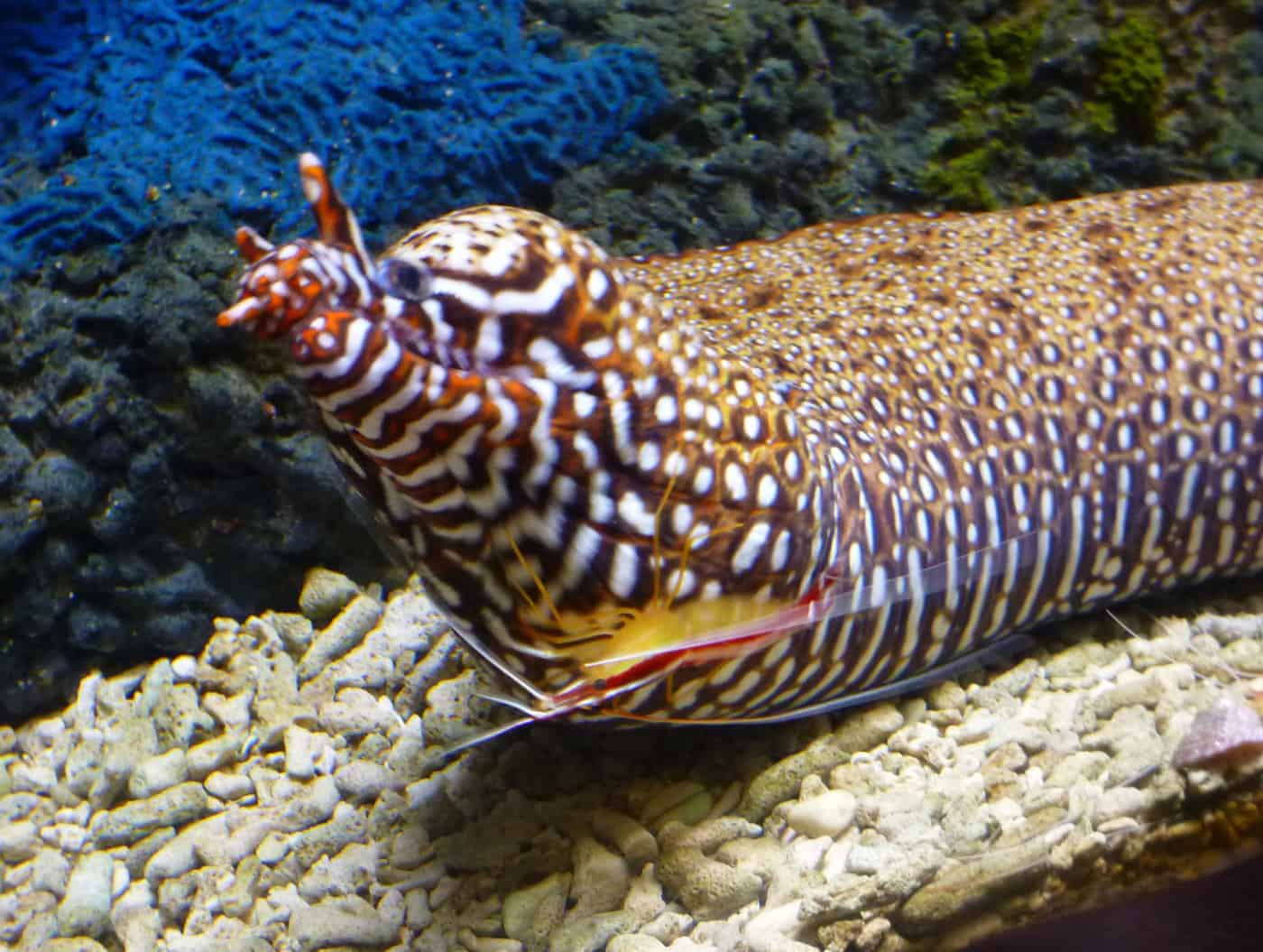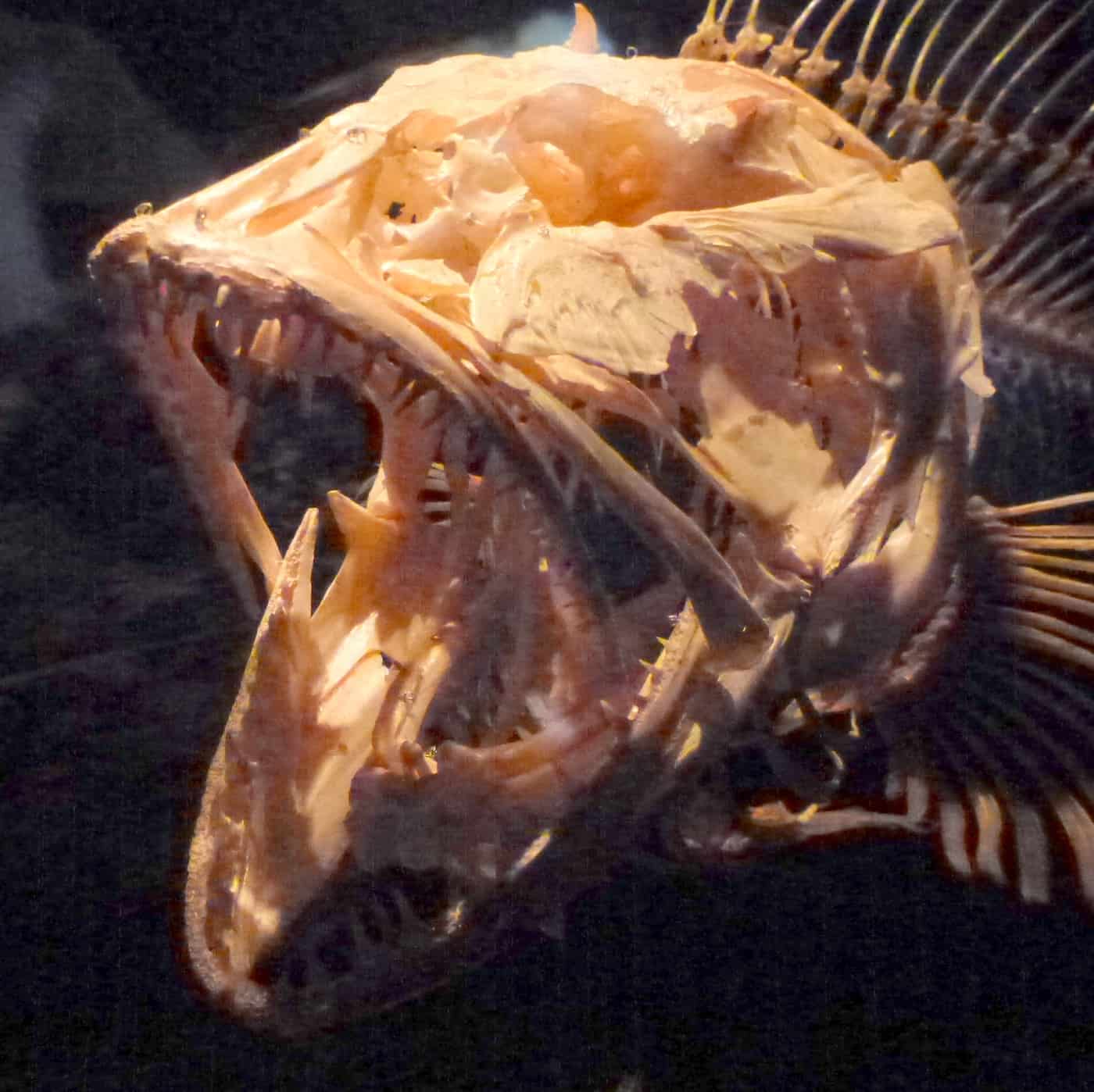Moray eel (subfamily Muraeninae)

This week we’re going to start exploring a slightly different fish family – the eels! Eels are fish that have adapted a long body shape and lost or significantly reduced their pelvic and pectoral fins. There are over 200 species of moray eels, containing those found in saltwater, brackish water (usually where salt meets fresh) and freshwater. They can be found in a wide variety of colors and patterns, and can be between 11cm and 4m long, depending on the species.
Moray eels are very unique in the fact that they have 2 sets of jaws! The first

rows of pointy teeth are pretty intimidating, but there’s another row behind that! The second set of jaws, called the pharyngeal jaws, assist in the capture and swallowing of prey. They have been known to bite humans, but mainly because a human disrupted them in their hiding place. If you have ever been diving, snorkeling or to an aquarium, you probably saw moray eels hiding in crevasses and holes. Moray eels do not have the greatest vision, and have mistaken fingers for a tasty snack. Morays mainly hunt at night, being nocturnal, but if something tasty swims by, they will pop out and grab it! With the modifications to their jaws, it is almost impossible for an eel to release its jaws. If you are ever swimming in the area where eels are known, be careful about sticking your fingers near any openings. During a diving trip in Grand Cayman during my MARVET course, my dive buddy, Alli, and I happened across a 2m green moray lounging in a cave. We tried to get closer for a picture, but he did not like the intrusion and charged out of the cave. He did not attack us, but swam off in the opposite direction.
Moray eels are becoming more common in home aquariums. They are not likely to attack the fish in the tank unless they are being picked on. Make sure that there is ample room to hide (caves, crevasses, etc.) for both the eels and the fish. Choose a species that will not grow beyond the capacity of your tank. There any many to choose from!
